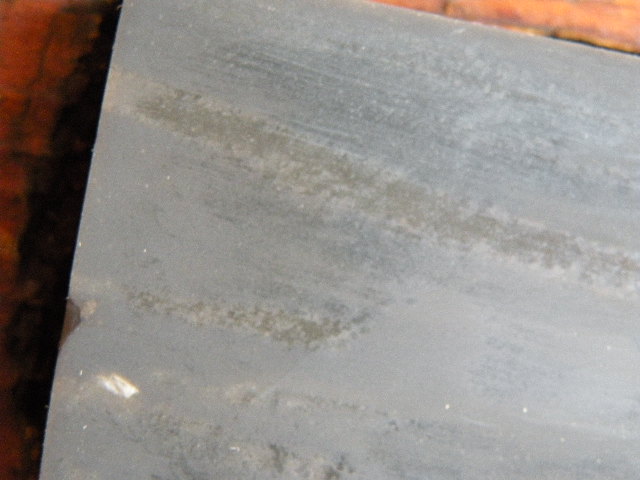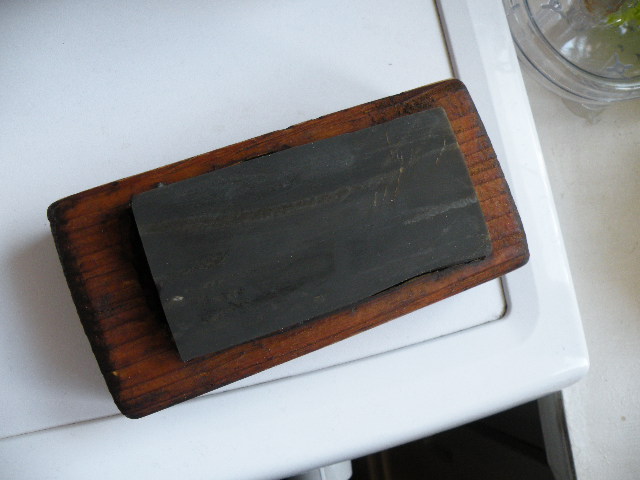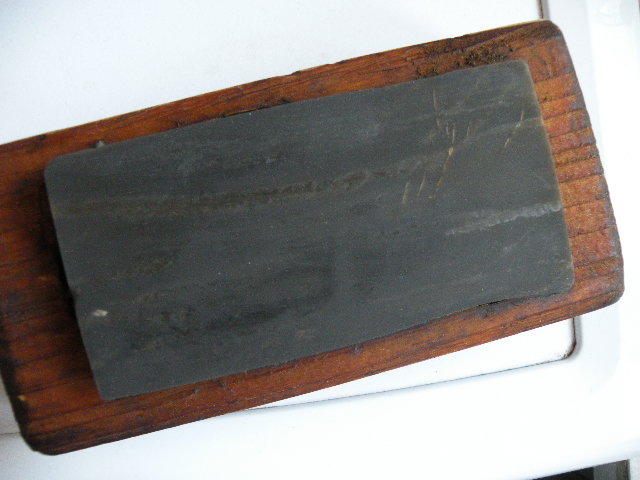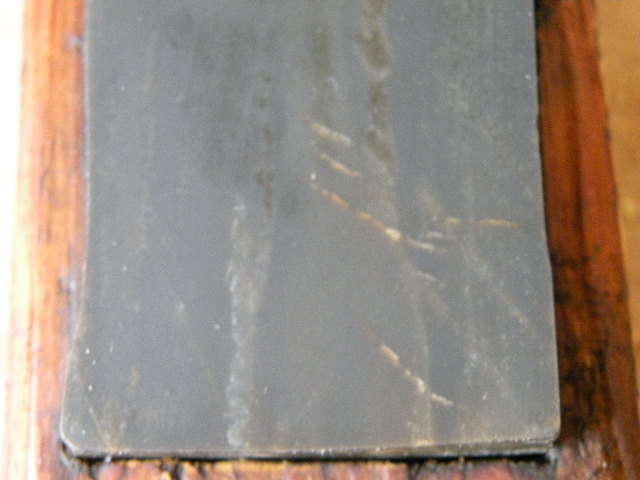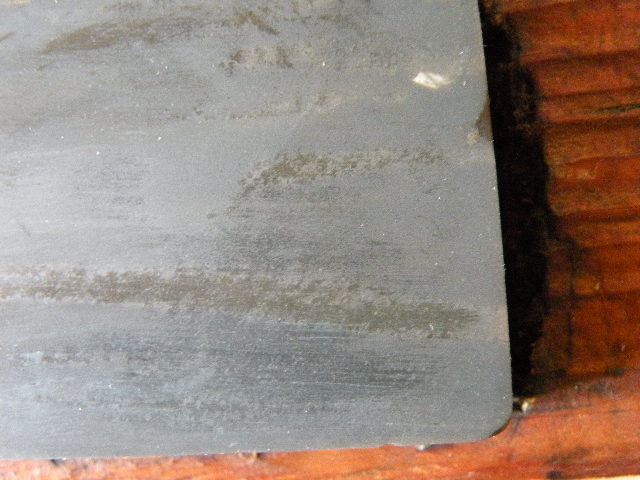Results 11 to 19 of 19
Thread: Hone ID Please
-
09-30-2012, 12:44 PM #11

I also didnt get where the slurry came from.
If its From the actual stone then its definately Schwedenstein where i put my vote.
-
09-30-2012, 11:29 PM #12

some dry pics will help
-
10-02-2012, 12:26 PM #13
-
10-02-2012, 12:31 PM #14

looks like a Turkish oilstone.
-
10-02-2012, 12:35 PM #15

Its not schwedenstein. I recall my vote
-
10-03-2012, 07:19 PM #16Senior Member

- Join Date
- Mar 2009
- Posts
- 1,211
Thanked: 202
I would still say OT.
-
10-05-2012, 09:44 AM #17'tis but a scratch!



- Join Date
- Oct 2010
- Location
- Durango, Colorado
- Posts
- 2,080
- Blog Entries
- 2
Thanked: 443
To me, the translucence makes it look like novaculite. Are the Turkish oilstones in that family?
"These aren't the droids you're looking for." "These aren't the droids we're looking for." "He can go about his business." "You can go about your business."
-
10-05-2012, 10:42 AM #18Senior Member



- Join Date
- Apr 2008
- Location
- Essex, UK
- Posts
- 3,816
Thanked: 3164
Looks just like my two 'new' turkish oilstones, which incidentally slurry quite easily with a DMT credit-card size medium diamond hone when wet. NB I have sawn them down to 2" and 1.5" wide, which might explain them generating slurry more readily than wider examples. Slurry generation from a piece of the same rock is very slow compared to the DMT, though.
Although not as fine as the old stones, these ones that have recently been quarried (and which are still available freshly quarried in some countries) cut fairly rapidly for a hard stone and with a slurry of the right consistency they can set a bevel. Turkish Oilstones are a form of novaculite, some that have been analysed show a silica content of over 70% while others show an aluminium oxide content of 50%, and I suppose that you can have varying degrees of both - alumina-silicate. Both are close in hardness on the MOHS scale, silica being the hardest at 9.5 or thereabouts, which I suppose explains the differences in cutting rate and the fineness of edge obtained from various samples.
The french and belgians apparently had their own native source for Turkish (aka 'Levant') Oilstone, which probably differs in composition, and apparently a stone quarried in the US was also termed Turkish Oilstone, so this must differ yet again from the originals - which takes us back to a previous thread where I posted that 'Turkish Oilstone' just became a 'type' or common name for any hard stone that produced a relatively fine edge and had some characteristics in common.
Regards,
NeilLast edited by Neil Miller; 10-05-2012 at 10:49 AM.
-
-
10-24-2012, 03:11 PM #19

so, it is a Turkish Olistone. But very fine. So 8000-9000 grit. Testing with Straight razor . very fast and good cutting...Thanks for all tips


 2Likes
2Likes LinkBack URL
LinkBack URL About LinkBacks
About LinkBacks






 Reply With Quote
Reply With Quote